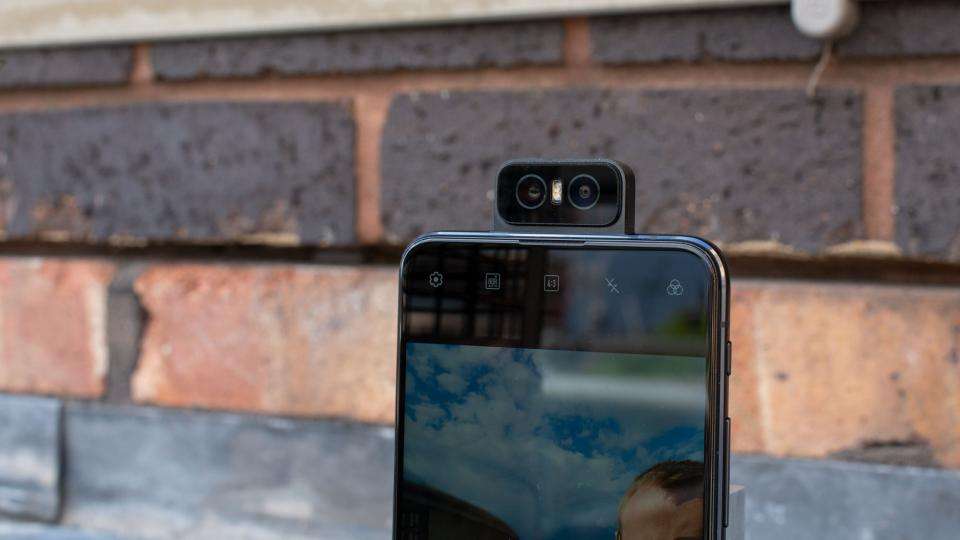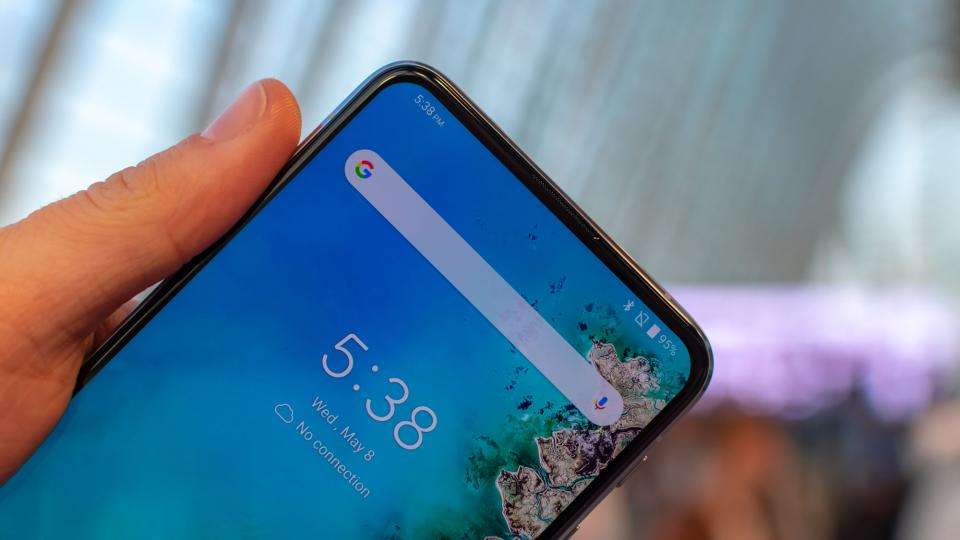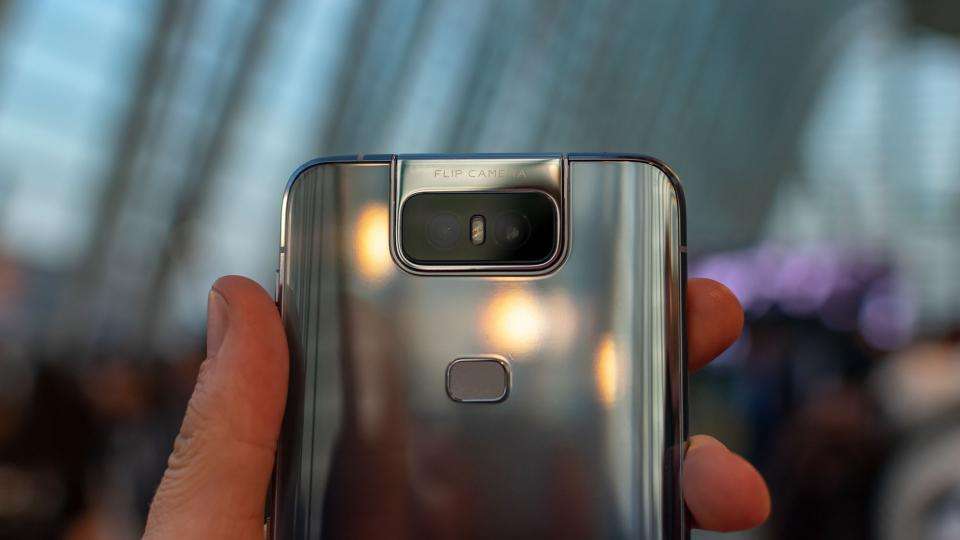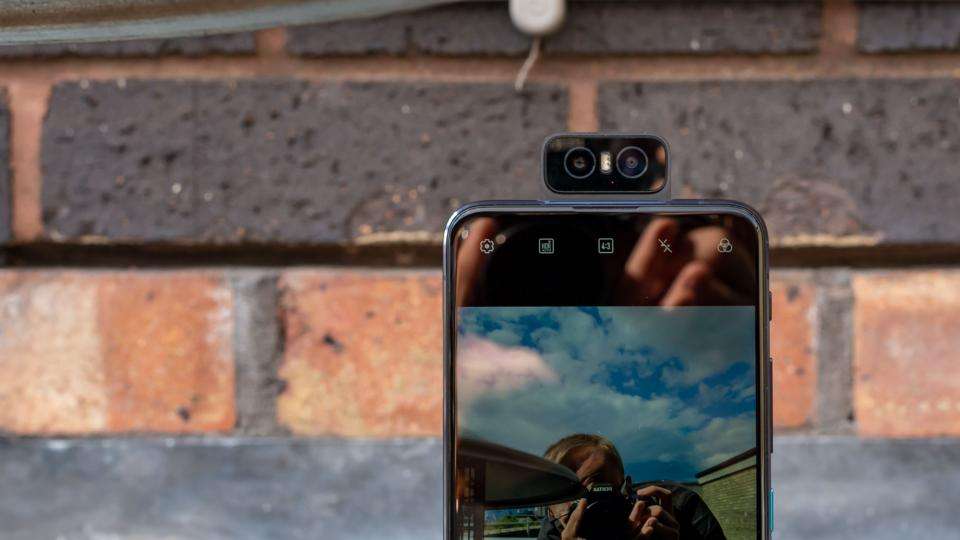The prevailing trend for full-screen smartphones is still being figured out. The big quest of the last few years – the elimination of the screen bezel – has turned into a troublesome journey. That pesky selfie camera and earpiece speaker keep on getting in the way of the austere, minimalist frontage we so desperately crave.
Of course, that’s not to say we haven’t seen any attempts at eliminating this problem. Solutions such as screen notches , vibrating displays and pop-up cameras have all been put forward, but often these aren’t implemented as well as we’d hoped, ultimately introducing their own set of problems.
Asus, however, has a new notch-less solution. The brand-new ZenFone 6 tackles the problem by ditching the selfie camera altogether, with the rear-mounted camera unit rotating towards the front of the phone instead. Confused? I don’t blame you.
Asus ZenFone 6 review: What you need to know
Going notchless isn’t all that’s special about the ZenFone 6. Despite its comparatively low asking price, Asus’ sixth-generation smartphone is as filled to the brim with niceties as any other modern flagship.

It’s powered by Qualcomm’s most up-to-date Snapdragon 855 mobile chipset , paired with either 6GB or 8GB of RAM, as well as a choice of 128GB or 256GB of expandable storage. It also has a massive 5,000mAh battery, promising much-improved stamina over any ZenFone before it. That itself is a challenge, as it’s the biggest Asus phone to date, with the notch-less screen measuring 6.4in across the diagonal.
Asus ZenFone 6 review: Price and competition
You might expect such a generously fleshed-out phone to incur a hefty toll on your bank balance, but Asus has miraculously managed to keep the asking price down to manageable levels.
The entry-level specification, which we were sent for review, comes with 6GB of RAM and 128GB of storage for £499. That’s pretty darn good, especially when most modern flagship phones are continuously creeping up to – and in some cases, exceeding – the four-figure mark.

The slightly more beefed-up configuration will set you back another £100, but even if you take this added cost into account, Asus has managed to produce a marvellously well-rounded package at a fraction of the cost of the ZenFone 6’s competition.
As for what else you can pick up for the same money, Xiaomi’s award-winning Mi 9 handset costs an equally palatable £499 , with identical internal specifications and a superb rear camera arrangement. Likewise, the Honor View 20 still does a commendable job, while the OnePlus 7 promises similar value for money.
Asus ZenFone 6 review: Design and key features
Let’s start with the stuff that isn’t unusual first. The ZenFone 6 is Asus’ all-singing and all-dancing flagship phone for 2019 and, aside from that curious camera (which I’ll discuss in more detail later), pretty much everything else is typical smartphone fare.
The phone itself is constructed from a single block of aluminium, sits nicely in the hand and feels just as special to hold as any other modern flagship. Mind you, the ZenFone 6 can be picked up only in boring black or silver colour schemes at launch, and it doesn’t benefit from the same shimmering, reflective two-tone rear as rivals such as the Huawei P30 Lite and Samsung Galaxy S10e .

There’s nothing out of the ordinary when it comes to the phone’s various physical elements, either. The power key, Google Assistant button and volume rocker sit on the right edge of the phone, with a USB Type-C charging port (supporting charging speeds up to 18W) sensibly placed on the bottom. Rather than following the trend for in-screen sensors, Asus has instead opted for a rear-mounted fingerprint reader, placed just above the middle of the phone.
Unsurprisingly, the ZenFone 6 is running the latest version of Google’s ever-popular mobile operating system, Android 9 Pie , with Asus’ own ZenUI 6 software overlay layered over the top. Much like Google's Pixel launcher , this keeps the stock Android look and feel with only a few minor tweaks.
Some of these unique features are quite handy, too. A system-wide dark mode can be enabled in the settings, while the rear-mounted fingerprint reader can be used for navigation. Double tapping the display wakes up the phone and the ZenFone 6 can also automatically adjust speaker volume based on noise levels in the environment.
Asus ZenFone 6 review: Display
The ZenFone 6’s front is what dominates your first impressions, with a massive 6.4in IPS display and a resolution of 2,340 x 1,080. That’s nothing out of the ordinary, but what is particularly special about this display is that the phone’s FHD+ panel supports the HDR 10 standard. This means it's capable of producing a wider range of colours, with brighter whites and a deep, inky-looking black. HDR-enriched content on Netflix looks rather good.

When placed under the scrutiny of our screen calibrator, we found that the ZenFone 6’s IPS panel was capable of delivering 87% of the sRGB colour gamut on the phone’s “standard” display mode, with an average Delta E of 2.27. Colours looked neutral and accurate, with only dark red tones producing slight oversaturation.
It’s a great-quality display in other departments, too. A contrast ratio of 1,158:8 is welcome, while the peak brightness of 549cd/m ² is good enough to stop you squinting at your Facebook feed as the summer sun approaches. Just watch out when you don your polarised sunnies: the phone’s polarising filter, which helps to reduce glare in direct sunlight, will make it difficult to see the screen while you have them on.
Asus ZenFone 6 review: Performance and battery life
The ZenFone 6 is powered by Qualcomm’s latest and greatest mobile chipset, the Snapdragon 855 – no surprises there, of course. This is an octa-core processor clocked at 2.84GHz, and built using a more efficient 7nm fabrication process, so it promises vastly improved speeds over last year's ZenFone 5Z . This is backed by up to 8GB of RAM and a generous 128GB or 256GB of expandable storage.
In benchmarks, the ZenFone 6 is faster than previous-generation handsets, providing similar levels of performance to most rivals using the most up-to-date silicone. The Geekbench 4 single and multi-core CPU tests recorded results of 3,529 and 11,131, which suggests that little else outside of Apple’s A12 bionic-fitted iPhones could perform any better.
Gaming performance is equally worthy, with the ZenFone 6 reaching the maximum frame rate of 60fps in the GFXBench Manhattan 3.0 on-screen test. According to the GameBench screen monitoring software, the ZenFone 6 also delivered a rock-solid frame rate of 40fps in PUBG Mobile at the highest visual quality.
Perhaps even more impressive, however, is the ZenFone 6’s overall stamina. At 5,000mAh in capacity, it has the largest battery we’ve seen in a flagship in quite some time, and that translates to some long-lasting stints away from the wall socket. Our video rundown test recorded a total result of 22hrs 36mins before the ZenFone 6 needed a recharge.
Asus ZenFone 6 review: Camera
Okay, it’s about time we discuss the ZenFone 6’s rather unique USP. Like I said earlier, there’s no selfie camera embedded into the front of the phone, which frees up the ZenFone 6’s frontage for a completely clean viewing experience. So what exactly is a person to do if they want to post Instagram vanity shots?
Well, Asus gets around this predicament by including a bizarre, movable camera. Yes, you read that right, the camera on the back of the phone can be flipped upwards, should you ever feel the need to show off your new haircut, or perhaps use Snapchat’s new gender-swapping camera filter.
The way this works (the camera, not the filter) is that you simply open the camera app and tap the selfie button, or ask Google Assistant to take a selfie. This spins the camera on its axis 180 degrees. It’s as simple as that. It moves quite fast for the most part, and you can adjust the angle using the manual controls in the camera app.
This also allows for automatic vertical and horizontal panorama photography, with the camera steadily moving upwards without having to move the phone itself. Of course, this enables you to use all of the shooting modes on offer when using the camera in selfie mode, including time-lapse, night shot, wide-angle and 4K video recording at 60fps with electronic image stabilisation (EIS) enabled.
Asus says the camera mechanism has been tested for more than 100,000 uses, which is supposedly the same as using the selfie camera 28 times a day, every day, for five years; something no one here is vain enough to test. It also has drop protection, retracting back into its hole if it identifies that the phone has fallen out of your hand.
As for the nitty-gritty technical specifications, the camera incorporates a 48-megapixel Sony IMX586 sensor with a relatively wide f/1.8 aperture. We’ve previously seen this high-megapixel camera unit in the Xiaomi Mi 9 , not to mention the OnePlus 7 Pro . Here it works in tandem with a secondary, 13-megapixel camera unit, featuring a wide-angle, 125-degree sensor.
Like the OnePlus 7 Pro, the ZenFone 6 captures 12-megapixel images by default, rather than the maximum 48-megapixels. This is strange – you’ll have to dig into the fiddly camera settings to increase the resolution – but in actuality, this is a good thing because 12-megapixel images look significantly better.
The 48-megapixel camera appears to suffer from a particularly aggressive noise reduction algorithm, which is a problem we’ve previously identified with both the OnePlus 7 Pro and Honor 20 Pro. Generally speaking, images looked smeary, as if someone had brushed over them with an egg wash. Low-light pictures are dramatically over-exposed.
Thankfully, as long as you stay away from the odd-looking 48-megapixel mode, pictures look rather good for the most part. The 12-megapixel setting manages to capture plenty of detail, with sharp, clean-looking images and a pleasingly neutral colour palette. The level of detail might not match the Xiaomi Mi 9 when the image is cropped by 200%, but generally speaking, these are some top shelf, Instagram-worthy shots.
Photos in low-light aren’t quite as good. While the night mode tends to do a good job of accentuating finer details and brightening up the image, there’s still a noticeable amount of visual noise and some telltale signs of compression artifacting. On the other hand, the secondary wide-angle camera does a great job at capturing people-packed selfies. Another positive is the video recording capabilities; the ZenFone 6 can capture 4K resolution footage at 60fps with image stabilisation engaged.
Asus ZenFone 6 review: Verdict
Asus’ ZenFone 6 is a bizarre mix of the extraordinary and the conventional. On the one hand, you’ll find the usual flagship trinkets and niceties, including Qualcomm’s Snapdragon 855 chipset, an HDR 10 screen, a big battery and a 48-megapixel sensor. On the other hand, of course, there’s that odd rotatable camera.
Do I think this is where notch-less phones are ultimately headed? Probably not, but there’s a heck of a lot more on offer here than the ZenFone 6’s spinnable camera gimmick. Asus’ latest smartphone is its best yet, successfully providing a sublime, well-rounded package for not much money.
|
Asus ZenFone 6 specifications |
|
Processor |
Octa-core Qualcomm Snapdragon 855 (1x2.84GHz, 3x2.41GHz, 4x1.78GHz) |
|
RAM |
6GB or 8GB |
|
Screen size |
6.4in |
|
Screen resolution |
2,340 x 1,080 |
|
Pixel density |
403ppi |
|
Screen type |
IPS |
|
Front camera |
N/A |
|
Rear camera |
48-megapixel f/1.8, 13-megapixel f/2.4 |
|
Flash |
Dual-LED |
|
Dust and water resistance |
N/A |
|
3.5mm headphone jack |
Yes |
|
Wireless charging |
No |
|
USB connection type |
USB Type-C |
|
Storage options |
128GB, 256GB |
|
Memory card slot (supplied) |
microSD (up to 1TB) |
|
Wi-Fi |
802.11ac |
|
Bluetooth |
5 |
|
NFC |
Yes |
|
Cellular data |
4G |
|
Dual SIM |
Yes (shared with microSD) |
|
Dimensions (WDH) |
159 x 75 x 9.2 mm |
|
Weight |
190g |
|
Operating system |
Android 9 |
|
Battery size |
5,000mAh |
